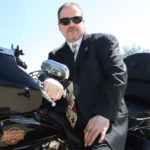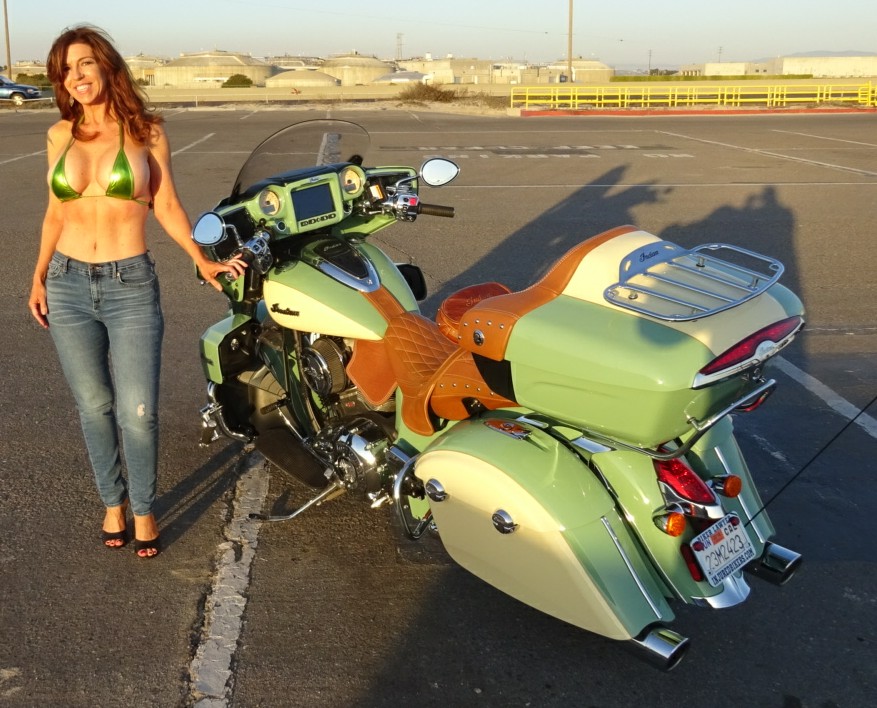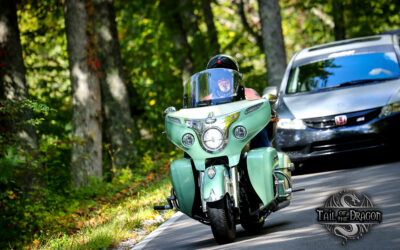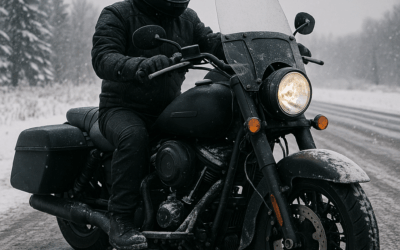By Norman Gregory Fernandez, Esq.
www.BikerLawBlog.com
As a lifelong biker, motorcycle accident attorney, and someone who has ridden just about every type of motorcycle imaginable, I can tell you from experience: trying to lean like you’re on a sportbike while riding a fully loaded cruiser is a one-way ticket to the pavement—or worse.
Whether you’re cruising on a Harley-Davidson Road Glide, an Indian Springfield, or any other heavyweight bagger with engine guards, floorboards, and hard saddlebags, you need to understand one thing: the design and clearance of your bike limit your lean angle—period.
Why Leaning Too Far on a Cruiser is Dangerous
1. Low Ground Clearance
Cruiser motorcycles are not built like sportbikes. Sportbikes have high seats, rear-set pegs, and are purpose-built for high lean angles in tight curves. Cruisers, on the other hand, prioritize comfort and long-distance stability, often at the expense of ground clearance.
When you lean too far:
-
Engine guards, floorboards, exhaust pipes, and saddlebags can touch down.
-
This contact can unweight your tires and cause the bike to slide.
-
If a hard part hits the ground and acts as a pivot, it can lift the rear wheel, leading to a loss of control and a high-side or low-side crash.
2. Imbalanced Weight Distribution
Large cruisers can weigh 800 pounds or more. With saddlebags, gear, and sometimes a passenger, the center of gravity is relatively high and rearward. Trying to execute aggressive lean angles on such a bike shifts that balance in dangerous ways, especially if:
-
The road is uneven or has gravel.
-
The tires are not properly warmed up.
-
You’re entering the turn too fast for the geometry of your motorcycle.
3. Saddlebag Interference
Many riders forget: your bags stick out more than your body. In tight turns, especially downhill or on unfamiliar roads, it’s not uncommon for hard saddlebags to:
-
Scrape the pavement.
-
Hit curbs or roadside obstacles.
-
Catch a lip in the road and wrench the bike off its line.
Real-World Crashes I’ve Seen as an Attorney
In my law practice, I’ve represented many riders who went down trying to corner too hard on heavy cruisers. In most cases:
-
They scraped engine guards or pipes mid-turn.
-
The rear wheel lifted slightly, broke traction, and the bike slid out from under them.
-
Some ended up under their bikes with fractured legs, ankles, or road rash from the slide.
In some tragic cases, the rider was ejected into traffic or a guardrail. All because they tried to take a corner like they were on a Ducati when they were riding a full-dress Harley.
How to Ride a Cruiser Safely Through Turns
Let’s get into the practical advice.
1. Slow In, Smooth Out
Approach all turns at a speed that’s appropriate for your skill, the bike, and the conditions. Do most of your braking before you enter the turn. A large cruiser is happiest when you:
-
Brake in a straight line.
-
Roll through the turn with light throttle.
-
Look through the turn, not at the pavement.
2. Use Countersteering, Not Body Lean
You don’t need to hang off the side of your cruiser like you’re Valentino Rossi. Instead, gently countersteer:
-
Push on the right handlebar to turn right.
-
Push on the left to turn left.
-
Let the bike lean under you, while keeping your body relatively upright.
This method keeps your center of gravity balanced and avoids scraping parts.
3. Know Your Lean Limits
Check your manual or forums for your bike’s maximum lean angle. Most cruisers are limited to 25–32 degrees. That’s far less than a sportbike, which can go over 50 degrees.
Some models have warning tabs on the floorboards that scrape before hard parts touch down. If you hear grinding metal, you’re at the edge of your bike’s safety envelope.
4. Be Wary of Road Conditions
Painted lines, gravel, tar snakes, and oil patches are particularly dangerous in turns. A heavy cruiser doesn’t recover from a traction loss easily. Take care when turning:
-
At night (visibility issues).
-
In the rain.
-
On unfamiliar or uneven roads.
A Final Word of Advice
Leaning too far in turns on a cruiser with engine guards and saddlebags is not only pointless, it’s dangerous. You’re not going to out-corner a sportbike on a 900-lb touring rig—and you shouldn’t try. These bikes are made for cruising, not carving.
If you ride smart, keep your inputs smooth, and respect the physical limits of your machine, you’ll have a long and enjoyable time on two wheels. But if you push it too far, you could end up hurt, in court, or worse.
Ride safe. Ride smart. And if someone else’s negligence causes your crash, call me—Norman Gregory Fernandez. I’m a biker who knows the law and will fight for your rights.
Norman Gregory Fernandez, Esq.
California Motorcycle Accident Attorney
www.BikerLawBlog.com
www.thepersonalinjury.com
Call: (800) 816-1529 Ext. 1





 Welcome, my name is
Welcome, my name is 






